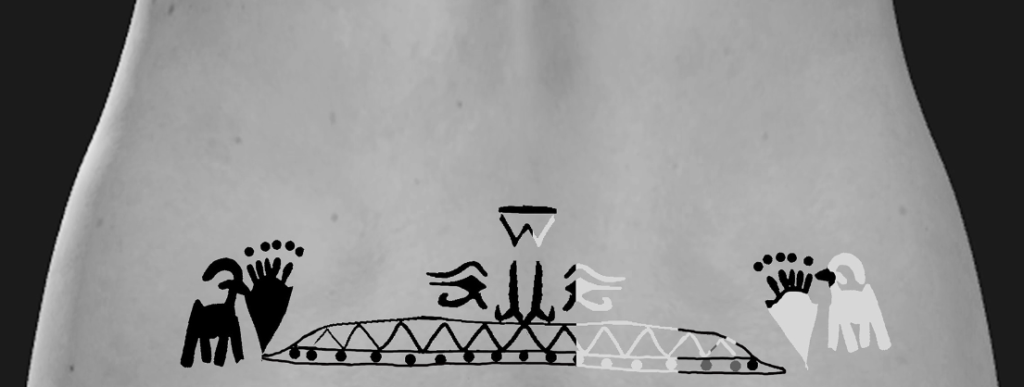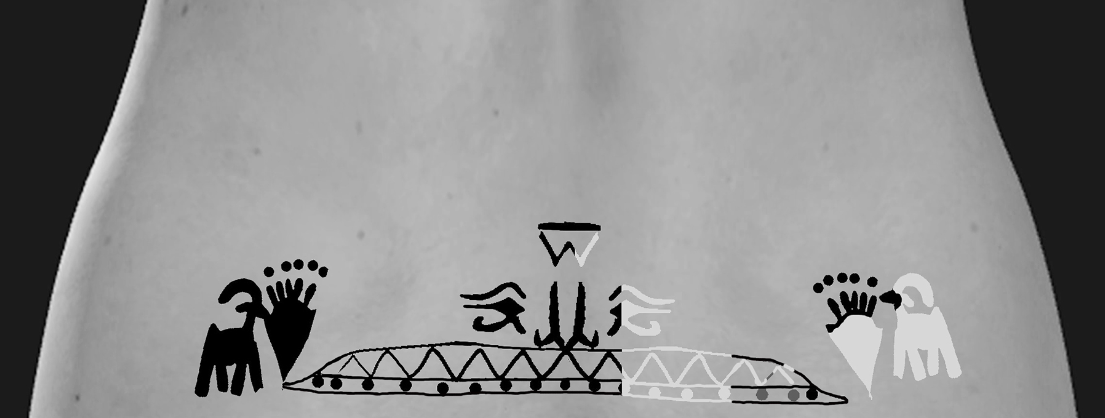When you hear the word art, the things that come to mind are probably paintings, sculptures, movies, music, and photography. One medium of art that often slips the mind is tattoos. Tattoos are powerful tools for expression with a fascinating history, dating back thousands of years. They have evolved greatly over the centuries, but the method has stayed relatively similar. It is believed that tattoos in ancient times were done with sharp, bronze tools, similar to needles. Archaeologist W.M.F Petrie found these instruments at the ancient Egyptian town site of Gurob.
The earliest documented tattoos were originally from Egyptian mummies, dating back to 2000 BC. In 1991, however, an even older example of tattoos was found on Otzi the Iceman, on the Italian-Austrian border (carbon dated to be 5,200 years old). The tattoos on the Iceman are hypothesized to have been applied as a form of acupuncture, to alleviate joint pain. The Egyptian mummies with tattoos were all women, and had been buried in Deir el-Bahari in an area associated with royal and elite burials. The excavators and some historians believe the tattoos dotting their bodies were signs that these Egyptian women were prostitutes, but that hasn’t been confirmed. Many of the tattoos were religious, with references to Ancient Egyptian goddesses. The placement and references to Bes, the god of childbirth, has led archaeologists to believe that these tattoos may have been to protect women giving birth. There were also clay figurines of women found along with the mummies, protective tattoos of Bes stretching across their lower backs and upper thighs.
People all over the world have tattooed themselves for millennia as a form of expression, pride, joint therapy, and spirituality. Native Americans used facial tattoos as an important part of their cultural expression, which were banned by European missionaries in an attempt to force assimilation. Many tribes used tattoos to mark milestones and accomplishments. Nowadays, Indigenous Americans are reclaiming their culture, and getting tattoos similar to those of their ancestors. This is an incredibly interesting topic that I can’t do justice to in a single article, so I highly recommend you read more about it on your own.
Tattoos became fashionable in Europe in the 18th century, after James Cook’s exhibition to Tahiti, where he witnessed marks that the people of Tahiti called “tatatau.” Particularly, sailors, soldiers, and coal miners began to get tattoos, mostly on their forearms. One particularly disturbing practice was when European sailors started collecting severed, tattooed heads of Maori warriors as trophies. To keep up with demand, Maori traders started capturing slaves and commoners, tattooing their heads, killing them, and trading them in exchange for goods. Luckily, this ended in 1831 when importing human heads was made illegal by the British government. Soldiers in the Army and Navy also took an interest in tattoos, with some opening tattoo parlors after their military service was complete. Tattoos were, at first, largely seen as a practice of the lower classes, but eventually, Royalty and other elites began to get them done as well. Just a few examples of “elites” who had tattoos are Winston Churchill and his mother, King George V, the Duke of Newcastle, and Tsar Nicholas II.
There is also a darker side to the use of tattoos throughout history. Greeks and Romans used them (called “Stigmata”) to mark slaves as property or punish criminals. During the Holocaust, Jewish people were forcefully tattooed with numbers in concentration camps. These dehumanizing practices put a damper on the otherwise (mostly) beautiful history of tattooing.
It’s also important to acknowledge that tattoos are very much not a Western invention—they’re just another cultural practice appropriated from Asian, Native American, and African cultures. Just like with many other forms of art, the Imperialist European nations witnessed beautiful creations being made in civilizations they deemed less than them, and began using them as if they were their own.
Back to the 21st century—For many, tattoos are more than just pretty pictures (although no judgment if that’s the reason you get a tattoo) but rather, are deeply symbolic and vulnerable. For example, the Medusa tattoo often symbolizes being a survivor of sexual abuse. Many young people have semi-colon tattoos, to represent their battle with mental health and suicidal thoughts/attempts. The reason for a semicolon tattoo as a symbol for this is because a semicolon is where a sentence could have ended, but didn’t. Therefore, many people who attempted suicide get this tattoo, to represent that their life could have ended, but instead, went on. Additionally, when people lose loved ones, they often get something to represent them tattooed on their bodies. My grandpa used to call me, “Мартышка Ивановна” (pronounced roughly like Mar-tesh-ka ee-van-ov-na) which means “Monkey Ivanovna” in Russian. I have no idea where he got this nickname—I never got a chance to ask him—but I’m considering getting this tattooed on my rib as a memory of him and his sense of humor. I personally believe that having tattoos that reminds you of a loved one can be deeply comforting and beautiful
When I was a little kid, I never thought I would get tattoos. However, tattoos ended up being extremely important in my life as well: I’ve been planning the ones I want, storing them away in a folder on my phone, for a few years now. When I turned 18, I finally got the “Petit Prince” tattoo I had been eyeing since I was sixteen, with the quote “Les enfants seuls savent ce qu’ils cherchent” (only children know what they’re searching for) as a tribute to the official end to my childhood. My grandparents were not happy, but this 2×2 inch picture on my upper arm brings me a great deal of joy and comfort. The next tattoo I plan to get is an open stack of books, to represent the way books have gotten me through some of the hardest (or most boring) parts of my life.
The next time you dismiss tattoos as “just a phase,” consider the sheer abundance of tattoos throughout the centuries, found from Egyptian mummies to frozen Icemen. Tattoos can be a beautiful and fascinating art form, for personal and cultural expression. They’re also extremely expensive, so maybe I should slow down on getting them…regardless, tattoos are a stunning art form with a rich history that should be respected.

A reconstruction of a tattoo on the lower torso and legs of one of the mummified Egyptian women, courtesy of Anne Austin of the University of Missouri-St. Louis

